Giles Scott: Secrets for success
Published on March 18th, 2022
Introduced to the Olympic Games in 1952, the Finn will not be used at Paris 2024, and no country will miss this singlehander more than the British. For the past six Olympics, beginning in 2000, team representatives Iain Percy (1), Ben Ainslie (3), and Giles Scott (2) have all won gold.
Scott reveals some of his secrets for success:
Equipment:
When I first moved into the Finn I went to see Sid, (Ainslie’s coach David Howlett) who told me you need this boat and this rig, this rudder, this sail and then you will be up and running. I remember at the time that my brother had been through a similar process – he had dabbled a bit in the Finn- but he went down the cheaper route.
He was thinking about just getting some gear to see how he went, but I took the approach that I would fork out – and it’s a lot to fork out as a student – and I will try and get some good kit. Sid pointed me in the right direction and actually, the numbers of that rig were probably within 4mm (tip deflection) of anything I ever looked at in the next 14 years.
Pumping technique:
The pumping game certainly moved on reasonably consistently over the time I was sailing the Finn. If you look back to just before I came into the boat (2007, before the unlimited pumping over 10 knots), you had the likes of Ben (Ainslie) who would just put the rest of the fleet to shame with how much quicker he was downwind, through technique and wave sailing and the next step on from that level was the introduction of free pumping above 10 knots.
The guys who really benefited from that were those who were fit but also had the basic understanding and technique that you needed to sail the waves and to be able to layer on the physicality, and not just pump up the back of waves which is what a lot of people get trapped into. Choose your wave, make sure your timing is right and the decisions are right – when to go up and when to go down.
I would go off the boil fairly quickly if I had time away from the boat and Matt (coach Matt Howard) would have to up my hours downwind because the technique would fall off and the snappiness of the decision points wasn’t right. I don’t think I was doing anything different from the other top guys, the group of people capable of being really quick downwind grew. There was a higher percentage of the Olympic fleet that were fast downwind at Tokyo 2020 than there had been at Rio 2016 and a similar step on from 2012.
Finn lessons:
I think it teaches you pretty well about the trade-offs and implications of where you decide to focus your time – in terms of performance. Unlike some of the other Olympic classes, (such as the Laser) in the Finn, you have the ability to tweak your equipment which if you make a good job of it you can make easy gains but equally, it can be a massive distraction where you can end up down endless rabbit holes that offer no performance gain.
I think over the years, with the help of Matt, I have managed to gain a better appreciation of what is worth the time and investment and that goes into all other forms of sailing, because outside of the Olympic world (apart from dinghy sailing) there is a big technical aspect to sailing and a lot of people are guilty of first looking at the equipment and secondly looking at themselves.
I always found the gains I could make by making myself better often outweighed the gains by making the equipment choices better. It’s a sliding scale and different for everybody, particularly when you compare it to the America’s Cup, but the balancing act is always still there.
On being fast:
I think I had the ability to do it more consistently. My racing style was always to be risk-averse, I would rarely be out on a corner. If it was a venue where you had to be out on a corner I had to be talked out there, which was the negative side of the way I approached my racing but statistically it’s quite a good approach as more often than not my style of tactics came good.
It was more percentage-based rather than seat of the pants. We race over a week with 11 races so a consistent approach is statistically the better way to win. I had a conversation with some of the Olympic (sail) boarders and they said their regatta was likely to come down to just one race and how do you deal with that? My answer was, ‘Well, probably not that well’, as my foundation of racing has been winning across a series. But when I thought about it the basic principles are still the same, it’s just your decision points become more critical.
Staying motivated:
One thing that kept me going and kept me into it was that I had other things going on in my sailing career. I think if I had done 2 cycles and 14 seasons of racing, which was the span of my Finn sailing, then I would probably have lost the will.
Because I was lucky enough to go off and do Cup racing and get involved in other programs, I was able to stay fresh, and whilst I was away getting fresh and keen, I was also learning. So, I was getting better and coming back keener, so it was a really positive spiral.
Whereas some of the guys who were just Finn sailing or maybe didn’t get the opportunity to join other teams, it can be bloody hard. Don’t get me wrong, it’s great going away on tour but you ask yourself some funny questions when you rock up to Arenal Yacht Club for the 14th time!
Source: British Finn Association


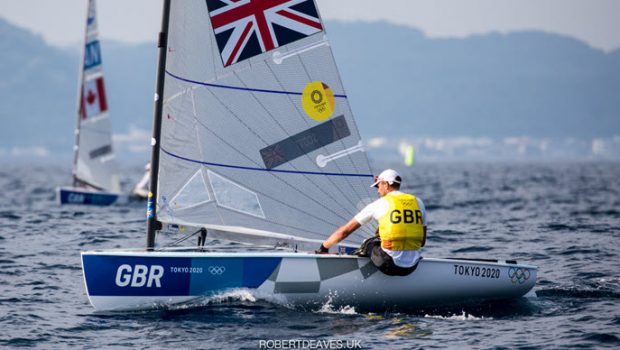


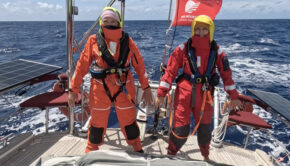
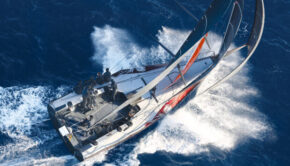
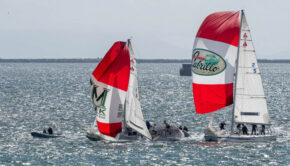
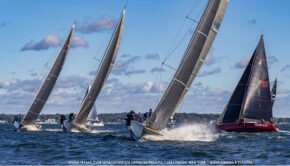
 We’ll keep your information safe.
We’ll keep your information safe.